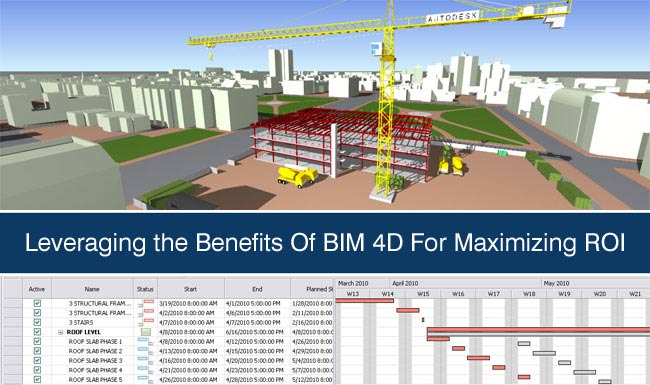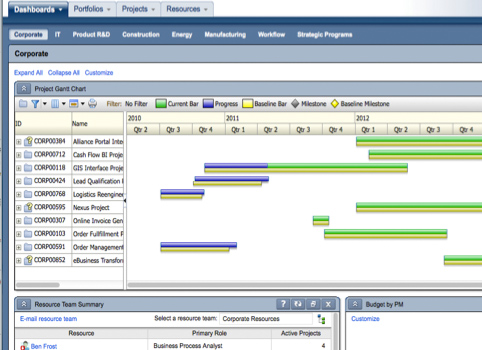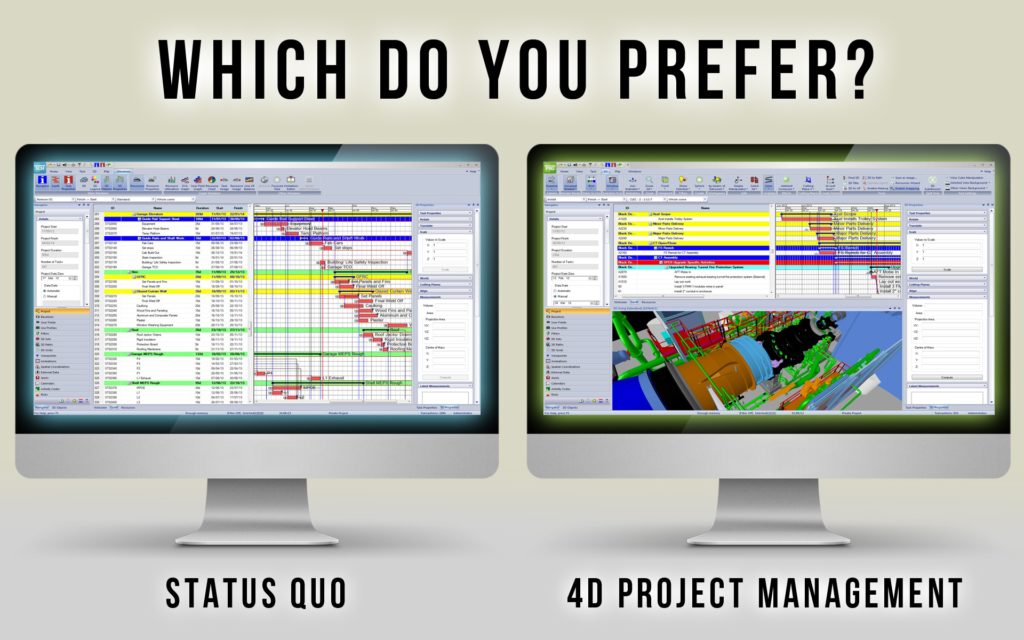4D BIM CPM Scheduling: not ready for prime-time
“The short answer is that there simply aren’t any extant Level III-IV 4D BIM risk-optimized or resource-loaded, apt CPM scheduling models with which to establish global parameters.
4D BIM CPM schedules can be generated from BIM models, but should they be?
That depends on who’s loading the parameters that 4D BIM uses to awkwardly splurt out dorky block diagrams that would make my Grampa chortle. But it also depends on what you’re objective is: if you just want to capture big picture, critical path and milestones, or staging and logistics, it’s a perfectly reasonable exploit. If you want to deep dive, you’re going to have to go for a deep-thought think tank of engineers and programmers. This is no longer a tenable option.
4D BIM is no longer a tenable option because 1) the models are unreliable; and 2) the cost of resources required to generate a risk optimized BIM model are prohibitive.

“Why? -hey don’t blame the platform.
4D BIM – Downright dowdy?
I am referring not so much to the logistics rendering, which has clear and rewarding benefits, as I am the wee bar chart below it. I don’t knock the Level I and II overviews, or specialty work that engineers have (too) painstakingly rendered from 4D BIM, but frankly they have better things to do.
There are more clever examples available, as there are 4D BIM hawkers praising its merits, but none of them incorporate resource loading or proper risk-optimizations, as such cannot be considered bona fide project control instruments any more than a bare duration-based CPM schedule. In point of fact, 4D BIM works in Pollyanna Perfect World Flowline theory, where there are 100% optimal conditions.
“AE has enough work to do with clash detection duty: let professional project controls folks do their job, and quit taking their work away from them. You really don’t want it anyway.
That said, there’s nothing inherently wrong with 4D BIM output – the problem is the input it is given is invariably based on faulty data sets that facilitate inaccurate risk-scenarios.

‘Doh!’
The likelihood of a builder following AE’s 4D BIM bar chart or animation for anything other than a general Level I reference is pretty miniscule. They will continue to pursue whatever CPM scheduling program they have been going with. Not for nothing, the BIM platform is not inexpensive, requires annual licenses, operators, and training and retraining for the operators. As a result, 4D BIM has yet to gain serious attention from the building community, and not been tried and true:
- Best practice dictates that any such 4D BIM CPM schedule should have all inputs, and inputs from all critical and near-critical path resources, i.e., contractors, vendors; even CPM schedulers. This is the exception rather than the rule of thumb for conflicts of interest, and conflicts in a general sense – another reason for lack of adoption.
- If AEs are generating 4D BIM schedules, perhaps it would be incumbent on them to share their work with the builder for his input, but I’d wager most would be risk averse to ‘tipping their hand’ in this fashion.
- It’s counterintuitive to let AEs lacking project control training unilaterally set the parameters for 4D BIM CPM schedule models: would you ask a sheet-metal worker with no mechanical drawing background to design a building in AutoCadd

“since you asked, the WBS in the status quo looks like it might have more to it than the eye candy on the right.
If we assume that the AE knowledge-base vacuum is generating 4D BIM CPM schedules, than what data set are the parameters based on?
‘It beats the heck out of me, and would befuddle any builder: I’ve never seen a builder use one. Most builders wouldn’t dream of building a Level II or IV detailed schedule from a 4D BIM animation- they regard as an exercise in futility.
Here’s a news bulletin: for the most part, AEs don’t really give a rat’s rear about 4D BIM CPM scheduling anymore than they do 5D BIM cost, save for a few technocrats, and why should they? Their certification requires no field internship, and neither estimating, nor resource-loaded scheduling, much less risk-optimized. As I’ve pointed out, neither do the Clueless Emperor CFOs and COOs making executive decisions in which they likewise have no more training than a chimpanzee.
“in other words, like an undefeated prize fighter who’s never taken a real punch, or gone over 5 rounds
So I rephrase: “4D BIM is a waste of time in its present level of deployment, implementation, and level of exactitude. 4D BIM lacks sufficient intuitive user interface mechanisms for ready adoption, and it is a considerable investment. Even if it did, a duration based logic baseline sans resource-loaded activities, will prove resistant to risk-assessments down the line.
“which is why so few schedulers get invited to the clandestine risk-register workshops.
With 4D BIM, it’s the old saw, literally, “that no structure can be built on weak foundations,” foundations being 4D BIM’s weak suit. AE baselines will invariably be defective from their point of conception onward. All of this means that 4D BIM, chronically a mainstream failure is ripe for disruption, and that disruption will be AI (artificial intelligence), i.e., AI CPM scheduling. Just like 4D BIM, parameters are set interactively. A white-paper on that subject is forthcoming, with an abstract in this space, and link to the full-paper.









